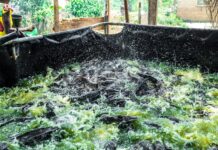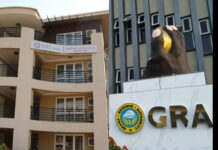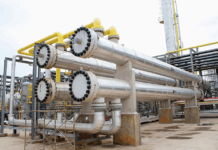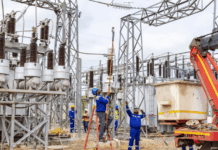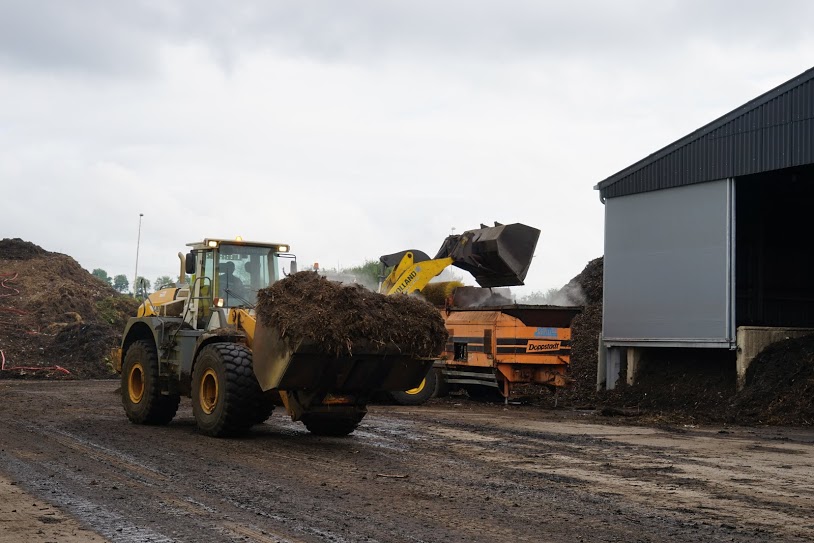
Soil-Concept is developing a procedure to transform sewage sludge compost into gas
ENERCOM is really a concentrate of technology. Pipes, conduits and different machines fill the small hall inside which the project is taking on its final shape, at its base on the “Fridhaff” landfill site near the town of Diekirch in the North of Luxembourg. Work was going on at a fast pace this summer as the installation is due to start production at the end of this year according to Soil-Concept CEO, Marc Dumoulling.
The company was founded in 1996. It is here that the compost generated since 2000 by mixing pretreated sewage sludge, plant waste and wood chips will be transformed into gas that will in turn power other installations generating heat and electricity. By-products will include pellets for industrial stoves and a phosphate-rich ash that can be used as both a high end fertilizer, and as a substitute for cement in the concrete sector.
The idea of ENERCOM is thus to take sewage sludge treatment and recovery several steps further. The project has been funded with 5.2 million euros, most of which came from the Seventh European Research and Development Programme. Soil-Concept SA has seven partners for this project– from Luxembourg, Germany, Belgium, Austria and Lithuania.
Today, about 9.000 tonnes of compost leave the “Fridhaff” compound every year. The compost is obtained by mixing pre-treated sewage sludge with plant waste. 70% of it is used by the farming sector as fertilizer. The rest is used to fertilize poor quality soils after construction works or on lawns for instance. Soil-Concept was founded in 1996 and has been collecting sewage waste in Diekirch since 2000. Today, about 35% of Luxembourg’s sewage waste goes into Soil-Concept’s big silos that are able to process 12,000 tonnes of the mix, which includes plant waste.

The ingredients are then transported to “Fridhaff” from every corner of the Grand Duchy. The silos are constantly aerated and the biomass is regularly turned over so as to accelerate the composting process. Micro-organisms are working on the organic waste and this work raises the temperature inside the heaps to about 60 to 70 degrees. At its peak, other organisms kick in, mineralizing the biomass that dries continuously. After several weeks, what you get resembles potting soil.
But, as Marc Demoulling, a biologist by trade who has been working on biogas installations in Luxembourg since 1984/1985, points out, the compost also has a high energetic value: “three kilos is the equivalent of one litre of gasoil”. The challenge being to extract the energy. This is achieved by transforming biomass into gas. Compost first has to be dried so as not to contain more than 15% humidity, which can only be done by heating it.
It will then be injected into a fluidized bed combustor, where the biomass will be transformed into gas at around 950 degrees. The composition of the gas may be altered by adding different substances to the reactor. The gas is then cooled down and cleaned to make it ready to fuel motors producing heat and electricity. “The different technologies used here already exist, but the concept we came up with of combining them is unique”, says Marc Demoulling who aims to continue research on the different processing steps of gasification. He is thinking of developing a centre of excellency in this specialized field, at “Fridhaff”.
During its test phase, the installation will be able to deliver about 2,000 MWh of electricity and 1,700 MWh of heat per year. If it would generate only thermal energy, this could be enough to heat around 1,200 homes per year. In addition, about 4,000 tonnes of pellets and 2,800 tonnes of enriched compost could be produced. It has been calculated that 10,000 tonnes of carbon dioxide emissions could be avoided by opting for this technology. If the project runs as expected, it will no doubt soon be implemented elsewhere in Europe and the world.
In “Fridhaff”, connecting pipes have already been installed to transport the energy generated inside the Soil-Concept compound to a neighbouring industrial area that has not been set up yet. Those pipes symbolize the project managers’ confidence in ENERCOM’s success.
By Claude Karger




